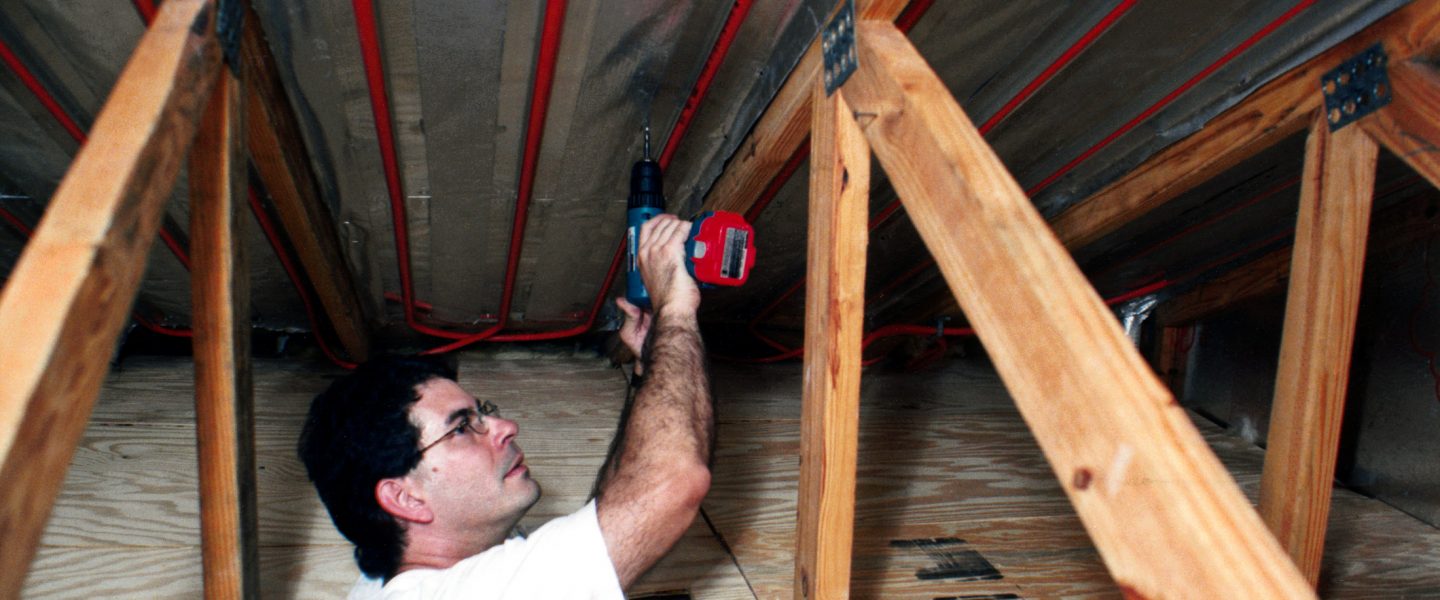 A radiant barrier is a layer of aluminum placed in an airspace to block radiant heat transfer between a heat-radiating surface (such as a hot roof) and a heat-absorbing surface (such as conventional attic insulation). In hot climates, benefits of attic radiant barriers include both dollar savings and increased comfort.
A radiant barrier is a layer of aluminum placed in an airspace to block radiant heat transfer between a heat-radiating surface (such as a hot roof) and a heat-absorbing surface (such as conventional attic insulation). In hot climates, benefits of attic radiant barriers include both dollar savings and increased comfort.
An attic radiant barrier system (RBS) is a mature energy-saving technology having first been evaluated in the late 1950s (Joy, 1958). Industry now manufactures roof plywood decking with the RBS already adhered to its underside. This decreases labor costs for installation for new construction, but it has little application to a retrofit technology. Probably the greatest potential for performance enhancement comes from proper installation. The accumulation of dust can degrade its performance, so roof-mounted application is preferred over horizontal application. Effective attic ventilation can significantly improve performance, and research has shown that radiant barriers can significantly influence heat gains of attic-mounted duct system systems.
Years of Research: 1982–85, 1997–98, 2001–2003
